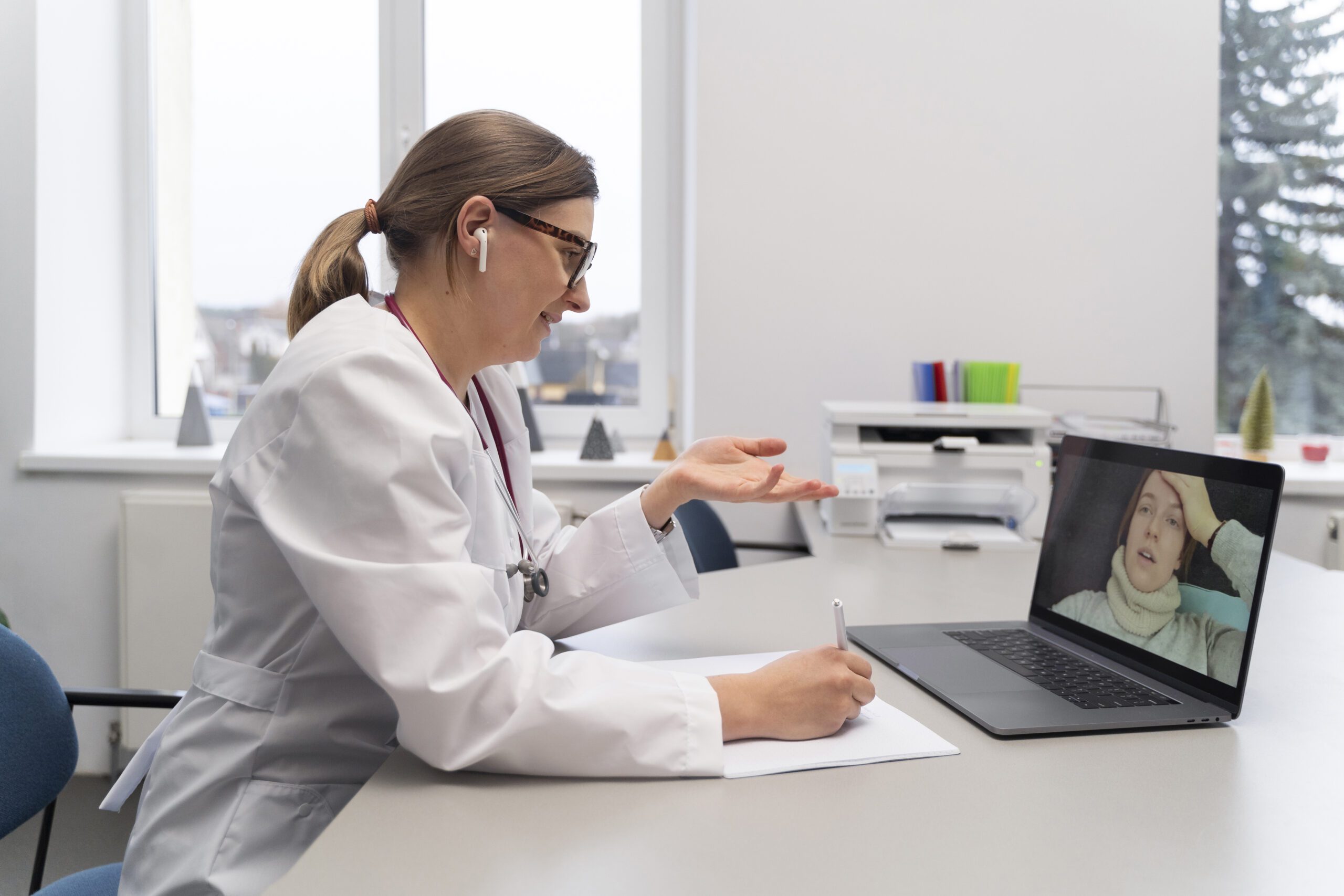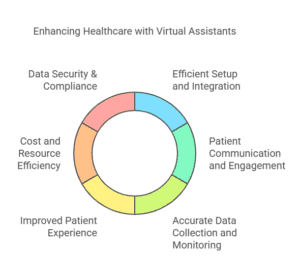On-Demand Outsourcing BPO Services for Healthcare Providers With 24/7 Coverage!
Save up to 70% on staffing costs!
Browse Specialty Staffing ServicesHow Do Virtual Assistants in Remote Patient Monitoring Reduce Hospital Visits?

Remote Patient Monitoring (RPM) is revolutionizing healthcare by enabling doctors to track patients’ health without frequent in-person visits. But what makes this system work efficiently? The answer: Virtual Assistants in Remote Patient Monitoring.
Virtual Assistants (VAs) act as the backbone of RPM, ensuring seamless operations—from setting up devices to assisting patients and managing real-time data collection. In this article, we’ll explore how Virtual Assistants in Remote Patient Monitoring are transforming patient care while improving efficiency and security.
How Virtual Assistants in Remote Patient Monitoring Improve Healthcare?
1. Efficient Setup and Integration
Implementing RPM systems can be overwhelming. Virtual Assistants in Remote Patient Monitoring streamline the setup process by:
- Ensuring all monitoring devices are properly installed and synchronized.
- Integrating software with existing healthcare systems.
- Troubleshooting any technical issues for smooth operation.
Think of them as expert technicians working behind the scenes to make sure everything runs without a glitch.
2. Enhancing Patient Communication and Engagement
Patient engagement is critical for successful RPM, and Virtual Assistants in Remote Patient Monitoring help by:
- Educating patients on how to use their monitoring devices.
- Sending reminders for check-ups and health updates.
- Answering patient inquiries in real-time.
With VAs, patients feel supported, leading to higher adherence and better health outcomes.
3. Accurate Data Collection and Monitoring
RPM relies on precise data to make informed healthcare decisions. Virtual Assistants in Remote Patient Monitoring ensure:
- Continuous tracking of vitals like blood pressure, glucose levels, and oxygen saturation.
- Immediate alerts for abnormalities to healthcare providers.
- Secure transmission of health data, reducing human errors.
With VAs managing data, doctors can focus on delivering quality care instead of administrative tasks.

Key Benefits of Virtual Assistants in Remote Patient Monitoring
- Improved Patient Experience – With 24/7 support, patients feel more at ease and confident in managing their health.
- Cost and Resource Efficiency – Healthcare facilities reduce operational costs by automating routine tasks and minimizing unnecessary hospital visits.
- Data Security & Compliance – VAs follow strict encryption and compliance standards to protect sensitive patient data.
Challenges and Solutions in Implementing Virtual Assistants in Remote Patient Monitoring
- Technical Barriers – Some devices may face connectivity or integration issues. Solution? Regular updates and expert IT support ensure smooth operation.
- Patient Hesitation – Some patients may be unfamiliar with technology. Solution? VAs provide easy-to-follow instructions and friendly support to increase adoption and confidence.
What Did We Learn?
- Virtual Assistants in Remote Patient Monitoring improve efficiency, patient experience, and data accuracy.
- They reduce administrative workload for healthcare providers.
- By ensuring compliance and security, they build patient trust in RPM systems.
What People Are Asking?
How do Virtual Assistants improve efficiency?
They streamline administrative tasks, assist with patient communication, and ensure accurate real-time health data collection.
How do Virtual Assistants improve?
They enhance efficiency by managing patient interactions, tracking vitals, and ensuring secure data transmission.
Are Virtual Assistants secure for patient data?
Yes, they use encryption and follow HIPAA compliance to protect patient data.
Can Virtual Assistants replace human healthcare providers?
No, they assist healthcare providers by automating tasks; however, they do not replace human medical expertise.
How can I integrate Virtual Assistants into my healthcare facility?
You can partner with companies like Staffingly, Inc. to implement professional Virtual Assistants for your RPM system.
Disclaimer:
For informational purposes only; not applicable to specific situations.
For tailored support and professional services,
please contact Staffingly, Inc. at (800) 489-5877
Email: support@staffingly.com.
About This Blog: This Blog is brought to you by Staffingly, Inc., a trusted name in healthcare outsourcing. The team of skilled healthcare specialists and content creators is dedicated to improving the quality and efficiency of healthcare services. The team passionate about sharing knowledge through insightful articles, blogs, and other educational resources.
 Book a Demo to Build Your Team Today!
Book a Demo to Build Your Team Today!
 Read Case Studies
Read Case Studies 


 Virtual Medical Assistants
Virtual Medical Assistants



